
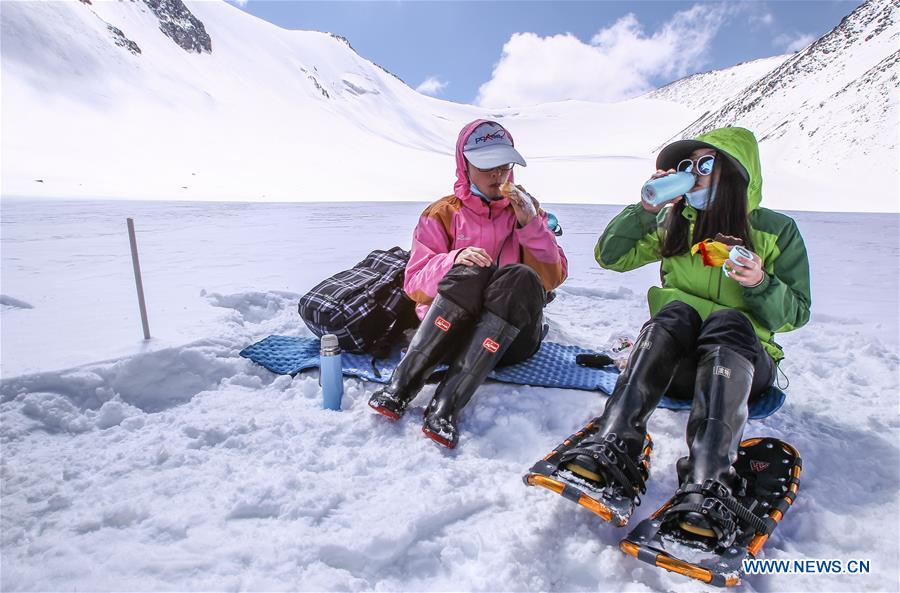
Scientists from Northwest Institute of Eco-Environment and Resources, Chinese Academy of Sciences (CAS), have a meal at Urumqi River source Glacier No.1 in Tianshan Mountains, northwest China's Xinjiang Uygur Autonomous Region, April 29, 2017. From April 27 to 30, CAS scientists carried out a "body check" for the Urumqi River source Glacier No.1 in Tianshan Mountains, including its thickness, temperature, albedo, material balance, velocity of speed, so as to analyze its changing trend over the past half century. (Xinhua/Cen Yunpeng)

Scientist Li Zhongqin, head of Tianshan Mountains Glacier Observation Station of the Chinese Academy of Sciences (CAS), shows boots for science research at Urumqi River source Glacier No.1 in Tianshan Mountains, northwest China's Xinjiang Uygur Autonomous Region, April 29, 2017. From April 27 to 30, CAS scientists carried out a "body check" for the Urumqi River source Glacier No.1 in Tianshan Mountains including its thickness, temperature, albedo, material balance, velocity of speed, so as to analyze its changing trend over the past half century. (Xinhua/Cen Yunpeng)

Part of the Urumqi River source Glacier No.1 is seen in Tianshan Mountains, northwest China's Xinjiang Uygur Autonomous Region, April 29, 2017. From April 27 to 30, CAS scientists carried out a "body check" for the Urumqi River source Glacier No.1 in Tianshan Mountains, including its thickness, temperature, albedo, material balance, velocity of speed, so as to analyze its changing trend over the past half century. (Xinhua/Cen Yunpeng)
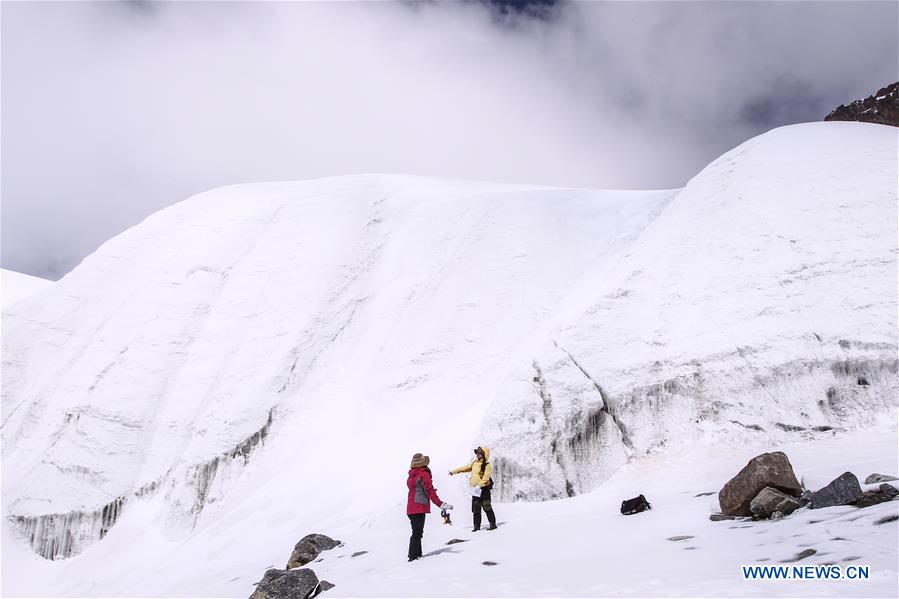
Scientists from Northwest Institute of Eco-Environment and Resources, Chinese Academy of Sciences (CAS), work at Urumqi River source Glacier No.1 in Tianshan Mountains, northwest China's Xinjiang Uygur Autonomous Region, April 29, 2017. From April 27 to 30, CAS scientists carried out a "body check" for the Urumqi River source Glacier No.1 in Tianshan Mountains, including its thickness, temperature, albedo, material balance, velocity of speed, so as to analyze its changing trend over the past half century. (Xinhua/Cen Yunpeng)
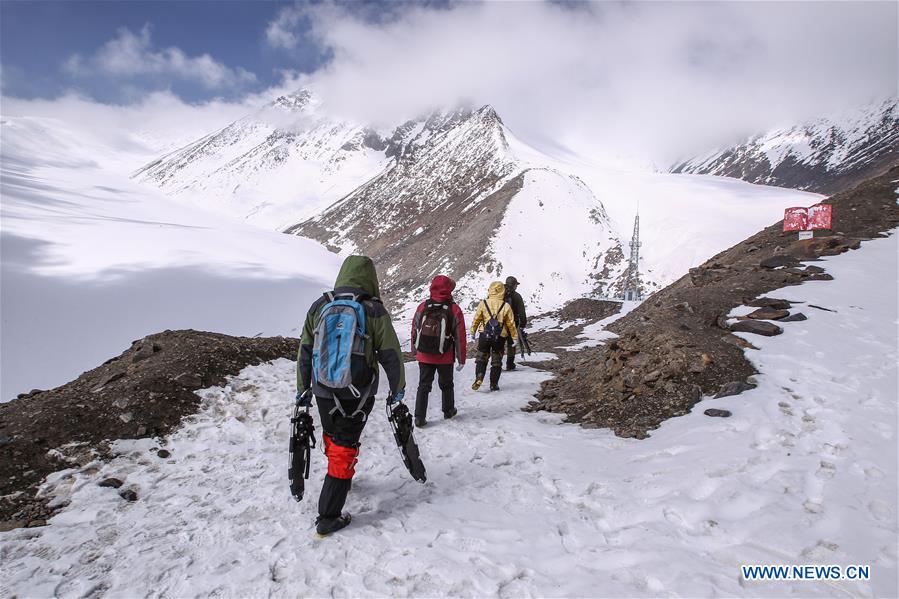
Scientists from Northwest Institute of Eco-Environment and Resources, Chinese Academy of Sciences (CAS), arrive at Urumqi River source Glacier No.1 in Tianshan Mountains, northwest China's Xinjiang Uygur Autonomous Region, April 29, 2017. From April 27 to 30, CAS scientists carried out a "body check" for the Urumqi River source Glacier No.1 in Tianshan Mountains, including its thickness, temperature, albedo, material balance, velocity of speed, so as to analyze its changing trend over the past half century. (Xinhua/Cen Yunpeng)

Scientists from Northwest Institute of Eco-Environment and Resources, Chinese Academy of Sciences (CAS), arrive at Urumqi River source Glacier No.1 in Tianshan Mountains, northwest China's Xinjiang Uygur Autonomous Region, April 29, 2017. From April 27 to 30, CAS scientists carried out a "body check" for the Urumqi River source Glacier No.1 in Tianshan Mountains, including its thickness, temperature, albedo, material balance, velocity of speed, so as to analyze its changing trend over the past half century. (Xinhua/Cen Yunpeng)
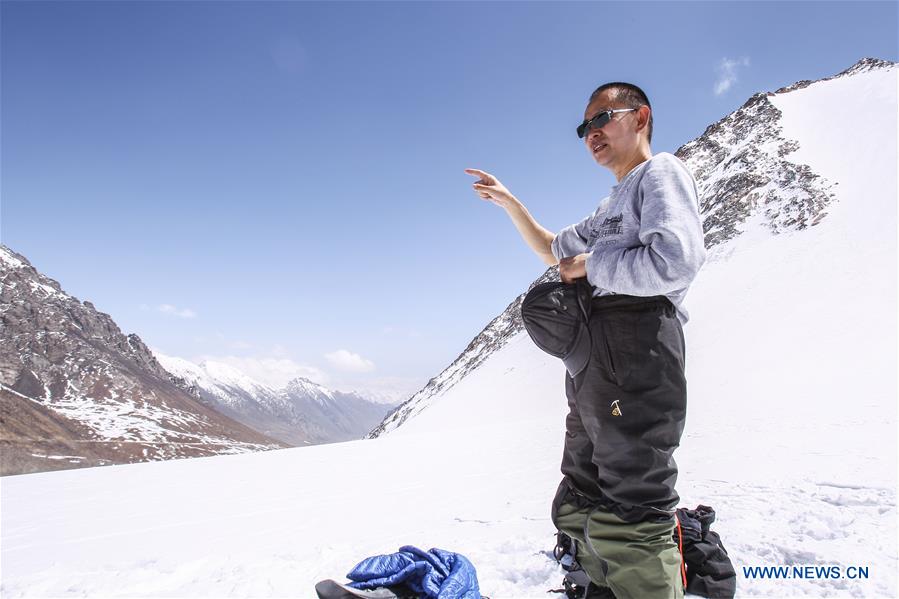
Li Zhongqin, head of Tianshan Mountains Glacier Observation Station, Chinese Academy of Sciences (CAS), explains the movement of Urumqi River source Glacier No.1 in Tianshan Mountains, northwest China's Xinjiang Uygur Autonomous Region, April 29, 2017. From April 27 to 30, CAS scientists carried out a "body check" for the Urumqi River source Glacier No.1 in Tianshan Mountains, including its thickness, temperature, albedo, material balance, velocity of speed, so as to analyze its changing trend over the past half century. (Xinhua/Cen Yunpeng)
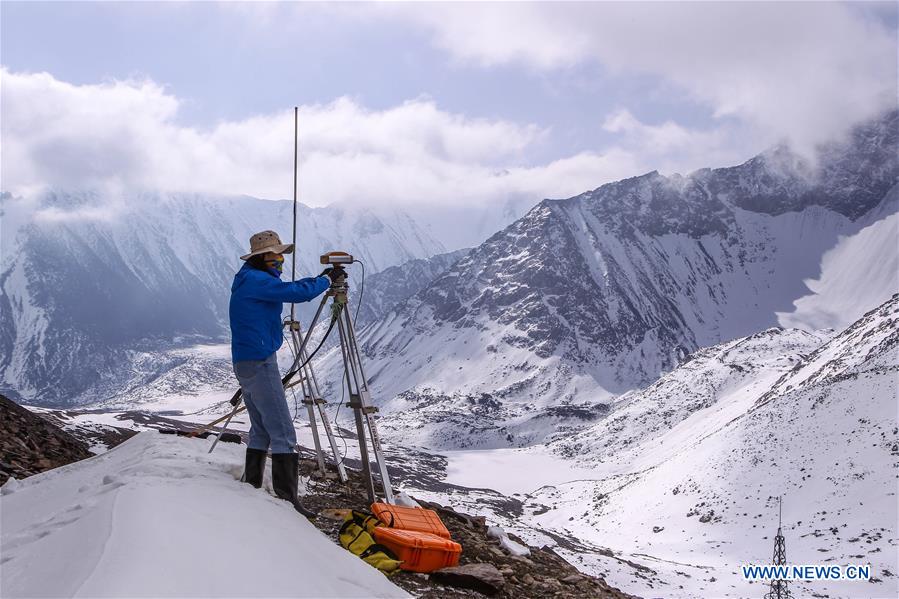
A scientist from Northwest Institute of Eco-Environment and Resources, Chinese Academy of Sciences (CAS), works at Urumqi River source Glacier No.1 in Tianshan Mountains, northwest China's Xinjiang Uygur Autonomous Region, April 29, 2017. From April 27 to 30, CAS scientists carried out a "body check" for the Urumqi River source Glacier No.1 in Tianshan Mountains, including its thickness, temperature, albedo, material balance, velocity of speed, so as to analyze its changing trend over the past half century. (Xinhua/Cen Yunpeng)

Scientists from Northwest Institute of Eco-Environment and Resources, Chinese Academy of Sciences (CAS), measure the albedo of the Urumqi River source Glacier No.1 in Tianshan Mountains, northwest China's Xinjiang Uygur Autonomous Region, April 29, 2017. From April 27 to 30, CAS scientists carried out a "body check" for the Urumqi River source Glacier No.1 in Tianshan Mountains, including its thickness, temperature, albedo, material balance, velocity of speed, so as to analyze its changing trend over the past half century. (Xinhua/Cen Yunpeng)
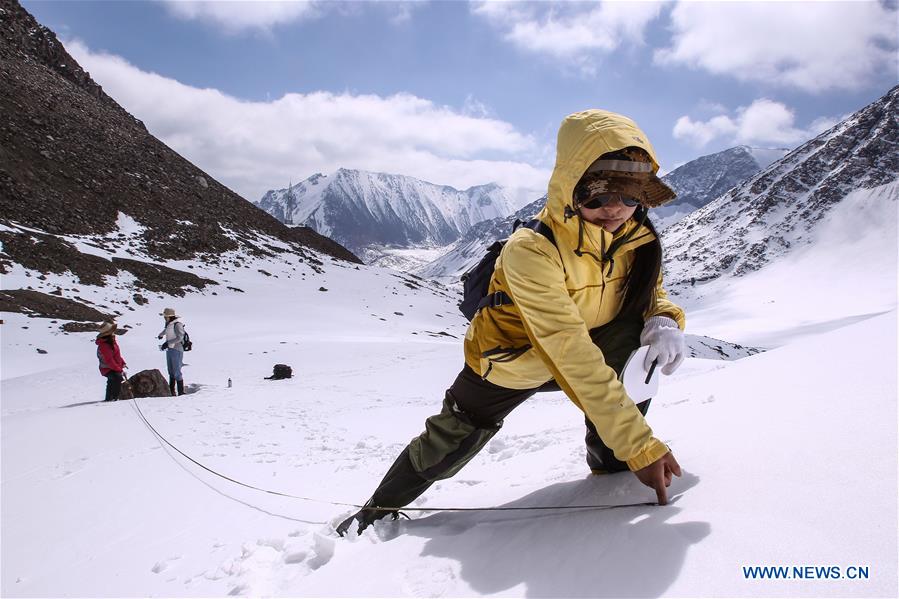
A scientist from Northwest Institute of Eco-Environment and Resources, Chinese Academy of Sciences (CAS), examines the glacial retreat at Urumqi River source Glacier No.1 in Tianshan Mountains, northwest China's Xinjiang Uygur Autonomous Region, April 29, 2017. From April 27 to 30, CAS scientists carried out a "body check" for the Urumqi River source Glacier No.1 in Tianshan Mountains, including its thickness, temperature, albedo, material balance, velocity of speed, so as to analyze its changing trend over the past half century. (Xinhua/Cen Yunpeng)
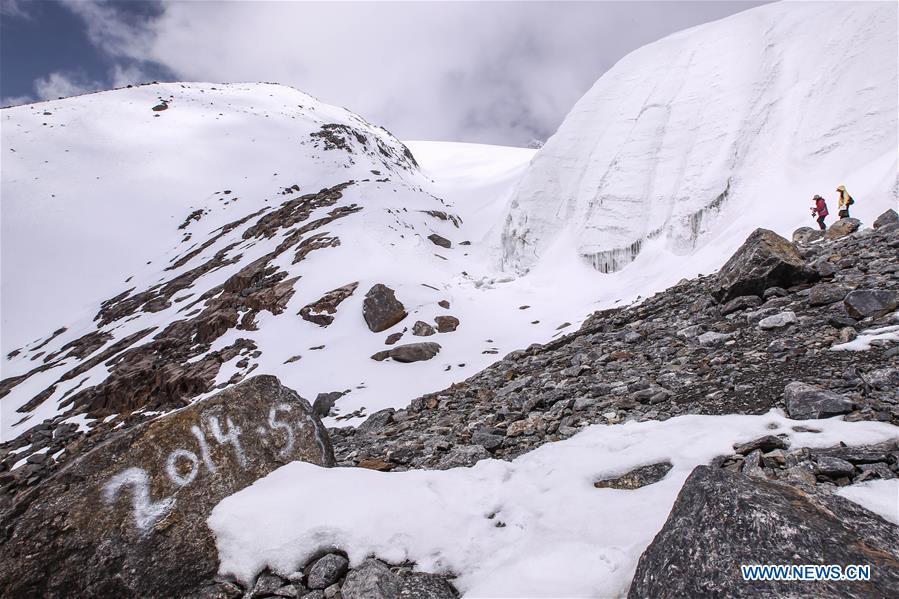
Part of the Urumqi River source Glacier No.1 is seen in Tianshan Mountains, northwest China's Xinjiang Uygur Autonomous Region, April 29, 2017. From April 27 to 30, CAS scientists carried out a "body check" for the Urumqi River source Glacier No.1 in Tianshan Mountains, including its thickness, temperature, albedo, material balance, velocity of speed, so as to analyze its changing trend over the past half century. (Xinhua/Cen Yunpeng)
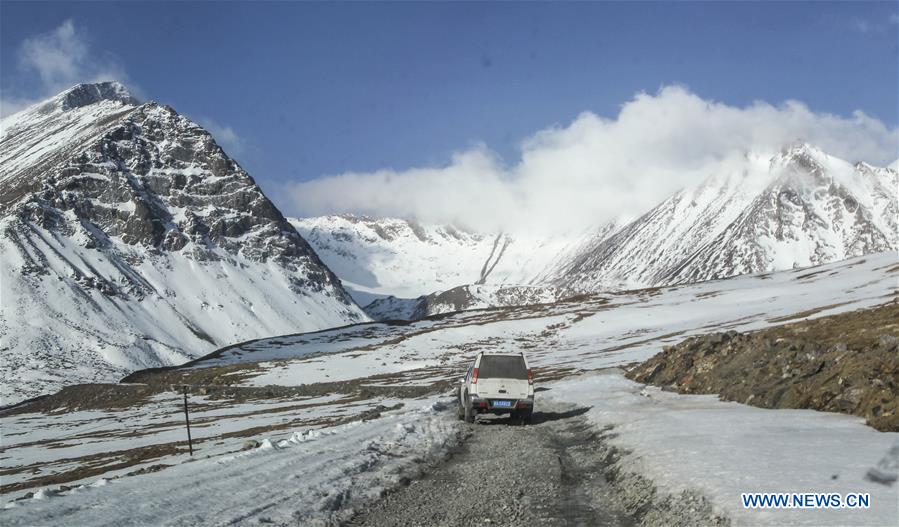
Scientists from Northwest Institute of Eco-Environment and Resources, Chinese Academy of Sciences (CAS), head to Urumqi River source Glacier No.1 in Tianshan Mountains, northwest China's Xinjiang Uygur Autonomous Region, April 29, 2017. From April 27 to 30, CAS scientists carried out a "body check" for the Urumqi River source Glacier No.1 in Tianshan Mountains, including its thickness, temperature, albedo, material balance, velocity of speed, so as to analyze its changing trend over the past half century. (Xinhua/Cen Yunpeng)
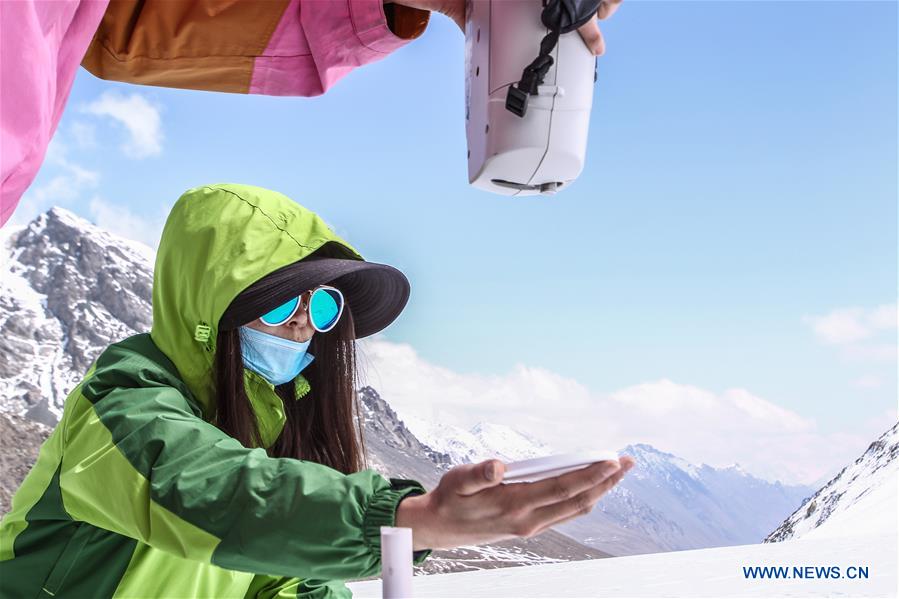
Scientists from Northwest Institute of Eco-Environment and Resources, Chinese Academy of Sciences (CAS), measure the albedo of the Urumqi River source Glacier No.1 in Tianshan Mountains, northwest China's Xinjiang Uygur Autonomous Region, April 29, 2017. From April 27 to 30, CAS scientists carried out a "body check" for the Urumqi River source Glacier No.1 in Tianshan Mountains, including its thickness, temperature, albedo, material balance, velocity of speed, so as to analyze its changing trend over the past half century. (Xinhua/Cen Yunpeng)
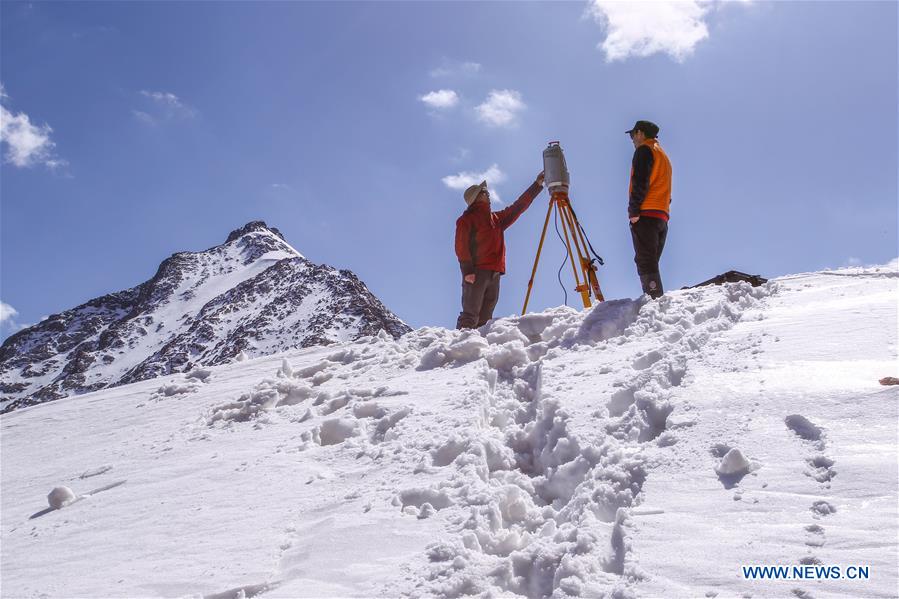
Scientists from Northwest Institute of Eco-Environment and Resources, Chinese Academy of Sciences (CAS), work at Urumqi River source Glacier No.1 in Tianshan Mountains, northwest China's Xinjiang Uygur Autonomous Region, April 29, 2017. From April 27 to 30, CAS scientists carried out a "body check" for the Urumqi River source Glacier No.1 in Tianshan Mountains, including its thickness, temperature, albedo, material balance, velocity of speed, so as to analyze its changing trend over the past half century. (Xinhua/Cen Yunpeng)
(Xinhua)

86-10-68597521 (day)
86-10-68597289 (night)

86-10-68511095 (day)
86-10-68512458 (night)

cas_en@cas.cn

52 Sanlihe Rd., Xicheng District,
Beijing, China (100864)

